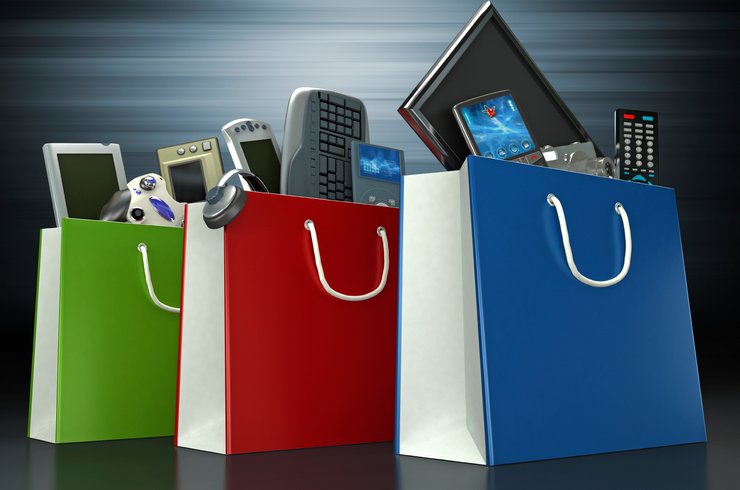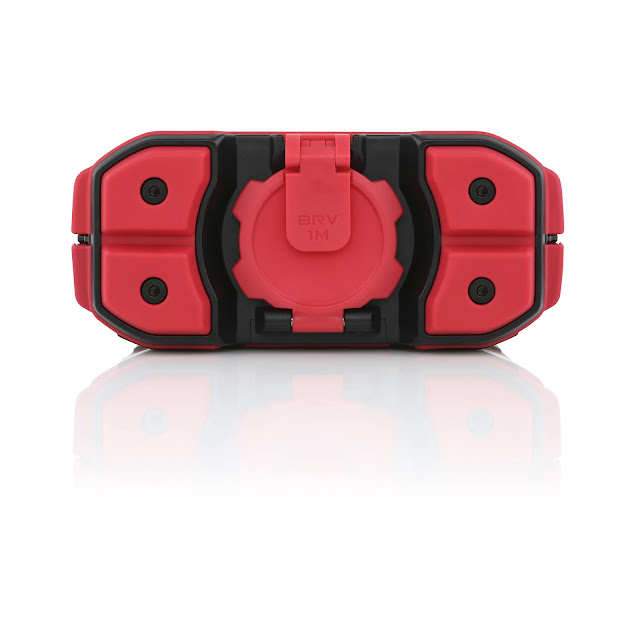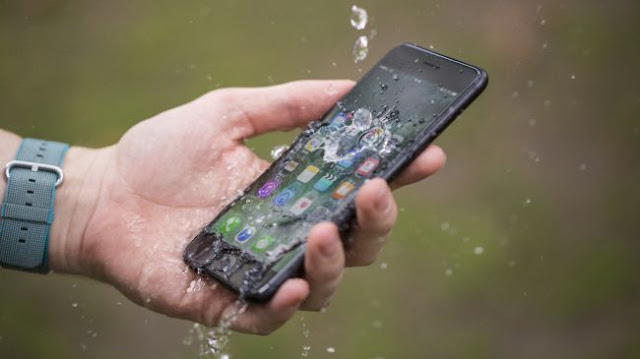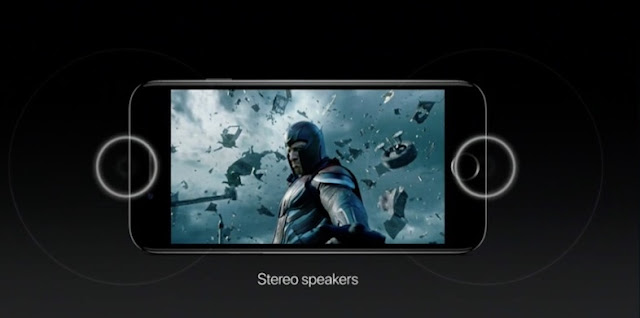THIS $73.83 BRAVEN BRV-1M IS THE BEST BLUETOOTH SPEAKER FOR YOU
Do you know what product is trending now? Bluetooth speakers. Since we are in a world of new discovering, Major
players like Beats by Dre have made bluetooth speakers a holiday favorite over the past few years.
Do you know what product is trending now? Bluetooth speakers. Since we are in a world of new discovering, Major
Since streaming music services are bigger than ever, it makes sense that customers are looking to carry their music with them wherever they go.
The $73.83 Braven BRV-1M joins this increasingly crowded category, looking somewhat like a miniature tank. Its rubberized contour is shockproof and waterproof, and it comes with mounts and straps to go anywhere you might feel like taking it.
Audio performance is solid on some music genres, but you'll hear some distortion on others. For some, the speaker's outdoor-friendly design, ability to charge devices with its battery, and built-in speakerphone will be enough, but there are better-sounding, rugged wireless speakers in this price range.
The $73.83 Braven BRV-1M joins this increasingly crowded category, looking somewhat like a miniature tank. Its rubberized contour is shockproof and waterproof, and it comes with mounts and straps to go anywhere you might feel like taking it.
Audio performance is solid on some music genres, but you'll hear some distortion on others. For some, the speaker's outdoor-friendly design, ability to charge devices with its battery, and built-in speakerphone will be enough, but there are better-sounding, rugged wireless speakers in this price range.
The BRV-1M portableBluetooth Speaker combines versatility and premium audio in a compact, rugged package. Completely waterproof, the BRV-1M boasts a shockproof exterior made of durable rubber that seals all the ports.
The included Action Mount accessory is compatible with GoPro mounting systems, meaning there’s no excuse for leaving music behind on your next adventure. With 12 hours of playtime and a built-in 2200mAh power bank to charge USB-enabled devices, there’s no doubt the BRV-1M is Built for the Ride.
The included Action Mount accessory is compatible with GoPro mounting systems, meaning there’s no excuse for leaving music behind on your next adventure. With 12 hours of playtime and a built-in 2200mAh power bank to charge USB-enabled devices, there’s no doubt the BRV-1M is Built for the Ride.
Bigger, Better Sound
Why the additional space? Braven doesn’t publish the audio specs, but comparing the sound of the two speakers it’s clear that the BRV1-M has more power on tap than its predecessor. That’s a good thing because the smaller speaker could be a little underwhelming, especially when used outdoors where sound rapidly dissipates.
The battery capacity has also increased from 1400mAh to 2200mAh. Despite the boost, the claimed (and observed) battery life remains in the 12-hour range, so the upgraded driver power likely accounts for that additional capacity.
Audio performance from a portable sub $100 Bluetooth speaker is never going to be stellar. In this case, bass is not a strong point, mid-range is not as clean as it could be, there is little in the way of depth and things get pretty rough as you approach maximum volume.
Results will vary by the music you play, so some listeners will be happier than others. For example, Morrisey’s Suedehead sounded quite good, punchy, clean and with a discernible bass line. Sonic Youth’s Teen Age Riot, on the other hand --with its distorted guitars-- was buzzy and messy, even at lower volumes.
This speaker isn’t intended to replace your home stereo, but the Braven BRV-1M would be perfectly fine for sitting on the beach or relaxing around a campfire.
If you want better bass performance and richer sound in an affordable waterproof speaker, I still prefer Braven’s own Balance --although it’s larger, not as rugged and does cost $30
Why the additional space? Braven doesn’t publish the audio specs, but comparing the sound of the two speakers it’s clear that the BRV1-M has more power on tap than its predecessor. That’s a good thing because the smaller speaker could be a little underwhelming, especially when used outdoors where sound rapidly dissipates.
The battery capacity has also increased from 1400mAh to 2200mAh. Despite the boost, the claimed (and observed) battery life remains in the 12-hour range, so the upgraded driver power likely accounts for that additional capacity.
Audio performance from a portable sub $100 Bluetooth speaker is never going to be stellar. In this case, bass is not a strong point, mid-range is not as clean as it could be, there is little in the way of depth and things get pretty rough as you approach maximum volume.
Results will vary by the music you play, so some listeners will be happier than others. For example, Morrisey’s Suedehead sounded quite good, punchy, clean and with a discernible bass line. Sonic Youth’s Teen Age Riot, on the other hand --with its distorted guitars-- was buzzy and messy, even at lower volumes.
This speaker isn’t intended to replace your home stereo, but the Braven BRV-1M would be perfectly fine for sitting on the beach or relaxing around a campfire.
Results will vary by the music you play, so some listeners will be happier than others. For example, Morrisey’s Suedehead sounded quite good, punchy, clean and with a discernible bass line. Sonic Youth’s Teen Age Riot, on the other hand --with its distorted guitars-- was buzzy and messy, even at lower volumes.
This speaker isn’t intended to replace your home stereo, but the Braven BRV-1M would be perfectly fine for sitting on the beach or relaxing around a campfire.
If you want better bass performance and richer sound in an affordable waterproof speaker, I still prefer Braven’s own Balance --although it’s larger, not as rugged and does cost $30
Design
Available in black, gray, or red, the BRV-1M is a rugged, fairly compact speaker—it’s shockproof, waterproof (IPX7 rated) rubberized contour measures roughly 2.5 by 6.3 by 3.4 inches (HWD).
Along the top panel there are buttons for power, play/pause/call management/pairing, as well as plus and minus buttons that adjust volume or control track navigation depending on whether you hold them down or tap them. The volume control works in conjunction with your mobile device's master volume.
Braven inline The front panel is all speaker grille, protecting the BRV-1M's dual drivers. Four rubber feet on the bottom panel keep the speaker from scooting across surfaces when deep bass vibrates it.
A snap-shut compartment on the rear panel protects the micro USB charging port (a USB cable is included), the USB port (for charging mobile devices), the 3.5mm aux input (a cable is included), the pinhole reset button, and the LED battery indicator.
The BRV-1M ships with the aforementioned audio cable and USB charging cable. You also get an action mount that's compatible with GoPro mounting systems (along with a hex wrench to affix it), and a tie-down strap.
Braven rates the speaker's battery life at roughly 12 hours, but your results will depend on your volume levels and your mix of wired versus wireless playback.
Available in black, gray, or red, the BRV-1M is a rugged, fairly compact speaker—it’s shockproof, waterproof (IPX7 rated) rubberized contour measures roughly 2.5 by 6.3 by 3.4 inches (HWD).
Along the top panel there are buttons for power, play/pause/call management/pairing, as well as plus and minus buttons that adjust volume or control track navigation depending on whether you hold them down or tap them. The volume control works in conjunction with your mobile device's master volume.
Along the top panel there are buttons for power, play/pause/call management/pairing, as well as plus and minus buttons that adjust volume or control track navigation depending on whether you hold them down or tap them. The volume control works in conjunction with your mobile device's master volume.
Braven inline The front panel is all speaker grille, protecting the BRV-1M's dual drivers. Four rubber feet on the bottom panel keep the speaker from scooting across surfaces when deep bass vibrates it.
A snap-shut compartment on the rear panel protects the micro USB charging port (a USB cable is included), the USB port (for charging mobile devices), the 3.5mm aux input (a cable is included), the pinhole reset button, and the LED battery indicator.
A snap-shut compartment on the rear panel protects the micro USB charging port (a USB cable is included), the USB port (for charging mobile devices), the 3.5mm aux input (a cable is included), the pinhole reset button, and the LED battery indicator.
The BRV-1M ships with the aforementioned audio cable and USB charging cable. You also get an action mount that's compatible with GoPro mounting systems (along with a hex wrench to affix it), and a tie-down strap.
Braven rates the speaker's battery life at roughly 12 hours, but your results will depend on your volume levels and your mix of wired versus wireless playback.
And MoreReview
Braven's new waterproof BRV-1M Bluetooth speaker is the company's updated version of 2013's BRV-1. While th at small speaker hit the market for $180, BRV-1M has slashed that price tag in half.
BRV-1M actually has more in common with a favorite speaker of ours, last year's BRV-PRO. BRV-1M boasts a similar design and size, but it's mostly made of plastic and rubber.
The speaker has a 2200 mAh power bank with a 1A port to recharge devices; Braven claims BRV-1M gets 12 hours of playtime on one charge. The IPX7 waterproof speaker comes with an action mount, tie-down strap, aux cable, and a micro-USB cable for recharging. BRV-1M comes in red, black, or gray.
BRV-1M’s size is almost identical to BRV-PRO, about 6.25” x 2.8” x 3.4”, though it’s a bit lighter at 1.2 pounds. Other than external materials — BRV-PRO features plenty of aluminum — BRV-1M has a nearly identical design, too.
Volume controls and play and power buttons are on top of the speaker, tie-down bars are on the side (not removable here), and a place to affix the action mount rests on the bottom of the speaker.
A sealable back flap covers the charging ports, audio in port, and a battery level indicator. Of course, BRV-1M doesn’t have BRV-PRO’s ability to mount extra accessories either, such as an extra battery or solar panel. BRV-1M is a minor league version of BRV-PRO, but there’s nothing wrong with that — it’s a great design.
Sound performance is where the BRV-1M falls behind the PRO even further. BRV-PRO has great clarity and sound for a speaker its size, even if it’s a bit lacking in bass. BRV-1M has a bit more bass in the mix, but it suffers in other ways.
The clarity isn’t quite the same, but worse, distortion is evident at higher volumes on some songs — and it’s tough to tell where it may pop up from song to song.
It seems to happen more often with certain lower frequencies. Other than this inconsistent issue, BRV-1M has solid performance for a speaker in its price range. Speakerphone performance was pretty good.
Braven's new waterproof BRV-1M Bluetooth speaker is the company's updated version of 2013's BRV-1. While th at small speaker hit the market for $180, BRV-1M has slashed that price tag in half.
BRV-1M actually has more in common with a favorite speaker of ours, last year's BRV-PRO. BRV-1M boasts a similar design and size, but it's mostly made of plastic and rubber.
The speaker has a 2200 mAh power bank with a 1A port to recharge devices; Braven claims BRV-1M gets 12 hours of playtime on one charge. The IPX7 waterproof speaker comes with an action mount, tie-down strap, aux cable, and a micro-USB cable for recharging. BRV-1M comes in red, black, or gray.
BRV-1M actually has more in common with a favorite speaker of ours, last year's BRV-PRO. BRV-1M boasts a similar design and size, but it's mostly made of plastic and rubber.
The speaker has a 2200 mAh power bank with a 1A port to recharge devices; Braven claims BRV-1M gets 12 hours of playtime on one charge. The IPX7 waterproof speaker comes with an action mount, tie-down strap, aux cable, and a micro-USB cable for recharging. BRV-1M comes in red, black, or gray.
BRV-1M’s size is almost identical to BRV-PRO, about 6.25” x 2.8” x 3.4”, though it’s a bit lighter at 1.2 pounds. Other than external materials — BRV-PRO features plenty of aluminum — BRV-1M has a nearly identical design, too.
Volume controls and play and power buttons are on top of the speaker, tie-down bars are on the side (not removable here), and a place to affix the action mount rests on the bottom of the speaker.
A sealable back flap covers the charging ports, audio in port, and a battery level indicator. Of course, BRV-1M doesn’t have BRV-PRO’s ability to mount extra accessories either, such as an extra battery or solar panel. BRV-1M is a minor league version of BRV-PRO, but there’s nothing wrong with that — it’s a great design.
Volume controls and play and power buttons are on top of the speaker, tie-down bars are on the side (not removable here), and a place to affix the action mount rests on the bottom of the speaker.
A sealable back flap covers the charging ports, audio in port, and a battery level indicator. Of course, BRV-1M doesn’t have BRV-PRO’s ability to mount extra accessories either, such as an extra battery or solar panel. BRV-1M is a minor league version of BRV-PRO, but there’s nothing wrong with that — it’s a great design.
Sound performance is where the BRV-1M falls behind the PRO even further. BRV-PRO has great clarity and sound for a speaker its size, even if it’s a bit lacking in bass. BRV-1M has a bit more bass in the mix, but it suffers in other ways.
The clarity isn’t quite the same, but worse, distortion is evident at higher volumes on some songs — and it’s tough to tell where it may pop up from song to song.
It seems to happen more often with certain lower frequencies. Other than this inconsistent issue, BRV-1M has solid performance for a speaker in its price range. Speakerphone performance was pretty good.
The clarity isn’t quite the same, but worse, distortion is evident at higher volumes on some songs — and it’s tough to tell where it may pop up from song to song.
It seems to happen more often with certain lower frequencies. Other than this inconsistent issue, BRV-1M has solid performance for a speaker in its price range. Speakerphone performance was pretty good.


















